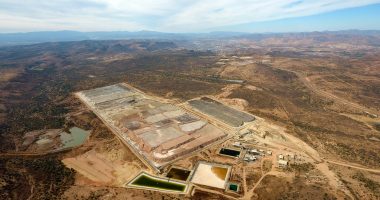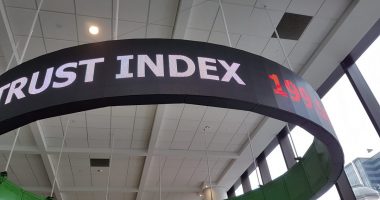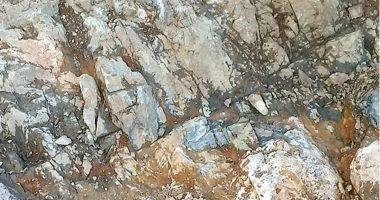The word on the lips of virtually every Canadian (as well as the rest of the world) is “inflation.”
Even those who don’t understand it know that it makes life difficult for them, as they can no longer enjoy some of the things they used to enjoy.
Over the weekend, a multitude of Sri Lankans, surging like a swarm of locusts, overwhelmed security operatives and took over the presidential palace, eventually forcing the president, Gotabaya Rajapaksa, to announce his resignation and flee the country. At the root of their anger was an inflation-induced economic crisis, which led to a severe shortage of essentials from food to fuel in the Southeast Asian country. The latest official data showed that inflation in Sri Lanka surged to 54.6 per cent in May.
In Ghana, thousands took to the street this week protesting high inflation. Consumer inflation in June shot up to 29.8 per cent, compounding already challenging living conditions in the West African country.
In the United Kingdom, the latest inflation figure in May showed that the Northwestern European country is facing its highest living costs in 40 years. Its inflation figure rose to 9.1 per cent in May, its highest since February 1982 and the highest rate among the G7 nations.
But with the United States releasing its inflation data for June this week, which stood at 9.1 per cent, it came at par with the UK. When the UK releases its inflation data for June, it will be clear which of them has a higher inflation figure.
With Canada’s inflation figure surging to 7.7 per cent in May, the country is comparatively faring much better than most countries. However, that does not bring much consolation to Canadians, as the inflation figure is the highest witnessed in almost 40 years.
To curb soaring inflation, the Bank of Canada announced a surprise full-percentage-point increase in the policy rate, an action last witnessed in 1998, pushing the interest rate to 2.5 percent from 1.5 percent. The Canadian central bank promised that more increases would come in the days ahead because of inflation.
That action affected the Canadian dollar, causing it to drop to a 20-month low. The loonie fell to a low of 75.62 cents US in early trading on Thursday, which was its lowest level since November 4, 2020.
What is inflation, and how does it affect your investment? In simple terms, inflation is an increase in the average cost of goods and services over time. It is obtained through the compilation and analysis of prices of goods like food, clothes, gasoline, transportation, and rent, which is used to determine the Consumer Price Index (CPI). It is called inflation when the CPI rises steadily and astronomically over some months.
Its direct consequence for investors is that value of their investments shrinks. Financial experts advise that one way to beat inflation is to invest in assets that don’t have a fixed value. Let’s look at some of them.
Stocks
Financial analysts say that stocks can keep pace with inflation, especially in the long run. They advise investors to look in the direction of companies that can pass their costs to their customers with little or no repercussion. Included here are the consumer staples sector and the financials.
They also advise that small-cap stocks offer higher potential in growth but are riskier than large-cap equities.
Real Estate
Another area experts point to is real estate because of its stability and elasticity. It brings in money through rent while rising in value over the years,
Analysts suggest that investors can buy real estate directly or invest in it by buying shares of a real estate investment trust (REIT) or specialized fund.
Commodities
Once inflation bites, the tendency is for investors to turn to tangible assets with the potential for an increase in value. Over the centuries, gold has been the leader in this area. Other precious metals are also included in this area as a store of value. According to financial experts, investors can buy gold directly from a bullion or con dealer or indirectly by investing in a mutual fund or exchange-traded fund (ETF) that owns gold. Another option is to buy the shares of gold producers directly or indirectly through an ETF or specialized mutual fund.
Let us now look at the stories that caught the interest of our readers most.
Nextech AR Solutions (CSE:NTAR) (OTCQB:NEXCF) becomes 3D model supplier for Prime Marketplace
Nextech AR Solutions is now a 3D model supplier for the Prime eCommerce marketplace.
Over the past 45 days the company has signed 17 new 3D modeling deals, continuing its expansion in Web 3.0.
CEO Evan Gappelberg joined Sabrina Cuthbert to highlight the news and discuss the company’s outlook moving forward.
Nextech Ar Solutions Corp. was up 2.70 per cent within the week, trading at C$1.14 at 11:24 a.m. ET.
Alianza Minerals (TSXV:ANZ) to start drilling at Klondike Copper Property
Alianza Minerals will be mobilizing crews to the Klondike Copper Property in mid-July.
Site and logistical preparation will be completed prior to the drill arriving by late July. Currently, five holes are planned to test three target areas for a total of 1,000 metres of drilling.
Jason Weber, President and CEO of Alianza Minerals, sat down with Sabrina Cuthbert to discuss the upcoming drill program.
Alianza Minerals Ltd. gained 10.00 per cent withing the week, trading at C$0.055 1:28 p.m. ET.
Silver Bullet Mines (TSXV:SBMI) produces silver and copper at its mill in Arizona
Silver Bullet Mines Corp. has successfully produced silver and copper at its wholly-owned 125 metric ton per day mill near Globe, Arizona.
To date there have been no major setbacks and all components are operating within expected parameters.
VP Capital Markets and Director Peter Clausi sat down with Sabrina Cuthbert to discuss the news.
Silver Bullet Mines Corp. was down 12.857 per cent in the week, trading at C$0.305 at 12:41 p.m. ET.
Baroyeca (TSXV:BGS) yields almost 1 kg per tonne silver equivalent at the Atocha Project
Baroyeca has assayed up to 986.6 g/t AgEq at the Atocha Project in Tolima, Colombia.
The results stem from three additional drill holes from the phase 2 program.
Raul Sanabria, President of Baroyeca, sat down with Sabrina Cuthbert to highlight the results.
Baroyeca Gold & Silver Inc dipped 25.00 per cent within the week, trading at C$0.14 at 135 p.m. ET.
Argentina Lithium (TSXV:LIT) completes first exploration diamond drill hole at its Rincon West Project
Argentina Lithium & Energy has completed the first exploration diamond drill hole at its Rincon West Project in Salta Province, Argentina.
The company reported positive lithium analyses from brine samples collected over a 70 metre thick permeable interval with lithium grades ranging from 225 to 380 mg/litre.
Nikolaos Cacos, President & CEO of Argentina Lithium, sat down with Sabrina Cuthbert to discuss the news.
Argentina Lithium & Energy Corp was up 1.92 per cent in the week, trading at C$0.26 at 10:01 a.m. ET.
Until next week when we will bring you another review of the top five stories of the week, enjoy your weekend.





